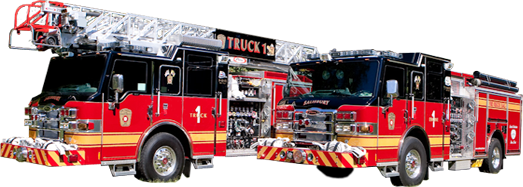Photo Gallery
This week’s weather is calling for one of the first actual “heat waves” of the summer season. With temperatures being fairly moderate to date, many people haven’t had an opportunity to acclimate themselves to constant temps in the 90’s, accompanied by the Eastern Shore’s high humidity. Here is some information relating to heat cramps, heat exhaustion, and heat stroke (which is a true medical emergency!), as well as some first aid tips on how to treat each. Remember!! Hydration and frequent breaks in activity are key to preventing and addressing heat related illnesses. Don’t overdo it!! Stay safe!!
What Are the Symptoms of Heat-Related Illnesses?
Heat cramp symptoms can include:
• Severe, sometimes disabling, cramps that typically begin suddenly in the hands, calves, or feet
• Hard, tense muscles
Heat exhaustion symptoms can include:
• Fatigue
• Nausea
• Headaches
• Excessive thirst
• Muscle aches and cramps
• Weakness
• Confusion or anxiety
• Drenching sweats, often accompanied by cold, clammy skin
• Slowed or weakened heartbeat
• Dizziness
• Fainting
• Agitation
Heat exhaustion requires immediate attention but is not usually life-threatening.
Heat stroke symptoms can include:
• Nausea and vomiting
• Headache
• Dizziness or vertigo
• Fatigue
• Hot, flushed, dry skin
• Rapid heart rate
• Decreased sweating
• Shortness of breath
• Decreased urination
• Blood in urine or stool
• Increased body temperature (104 degrees to 106 degrees F)
• Confusion, delirium, or loss of consciousness
• Convulsions Heat stroke can occur suddenly, without any symptoms of heat exhaustion.
If a person is experiencing any symptoms of heat exhaustion or heat stroke, GET MEDICAL CARE IMMEDIATELY. Any delay could be fatal. Seek emergency medical care for anyone who has been in the heat and who has the following symptoms:
• Confusion, anxiety, or loss of consciousness
• Very rapid or dramatically slowed heartbeat
• Rapid rise in body temperature that reaches 104 degrees to 106 degrees F • Either drenching sweats accompanied by cold, clammy skin (which may indicate heat exhaustion) or a marked decrease in sweating accompanied by hot, flushed, dry skin (which may indicate heat stroke)
• Convulsions
• Any other heat-related symptom that is not alleviated by moving to a shady or air-conditioned area and administering fluids and salts.
What Are the Treatments for Heat-Related Illness?
Heat cramps can usually be alleviated by escaping the heat, resting, drinking clear juice or a sports beverage, and eating moderately salty foods. Gentle massage or firm pressure applied to cramping muscles may help alleviate spasms. In severe cases, the victim may need intravenous fluids and salts. If heat cramps do not go away within the hour, or if you have heart disease or are on a salt restricted diet, seek medical help.
For Heat Exhaustion and Heat Stroke:
First, GET HELP. It is critical that emergency medical assistance be called as soon as possible. Then, if possible, get the victim to drink, but don't force fluids if the person is confused or has passed out. Avoid alcohol or caffeine. The primary treatment for heat exhaustion is replacement of lost fluids and salt. Victims should be moved to a cool environment, lie flat or with their feet raised slightly above head level, and sip a cool, slightly salty beverage -- such as a sports drink, tomato juice, cool bouillon, or other vegetables or fruit juices.
Heat stroke usually develops rapidly and can cause permanent brain damage or death if not treated promptly. Anyone with heat stroke needs emergency medical attention!
. • While help is on the way, move the victim into the shade; wrap them in cool, wet bedding or clothing; or remove the victim's clothes and sponge his body with cool water until help arrives.
• Ice packs can be placed on the groin, neck, or underarms; or the victim can be fanned by hand or with an electric fan or a blow-dryer set on cold (do not use a blow-dryer that blows only hot air).
• If possible, use a thermometer to monitor the person's temperature and stop cooling treatments if his temperature normalizes.
• Once at the hospital, a person who has suffered heat stroke may be given intravenous drugs to control seizures or other complications, may receive additional intravenous fluids, and will likely be confined to bed rest and monitored for 24 hours to several days.
For further information, go to www.webmd.com




